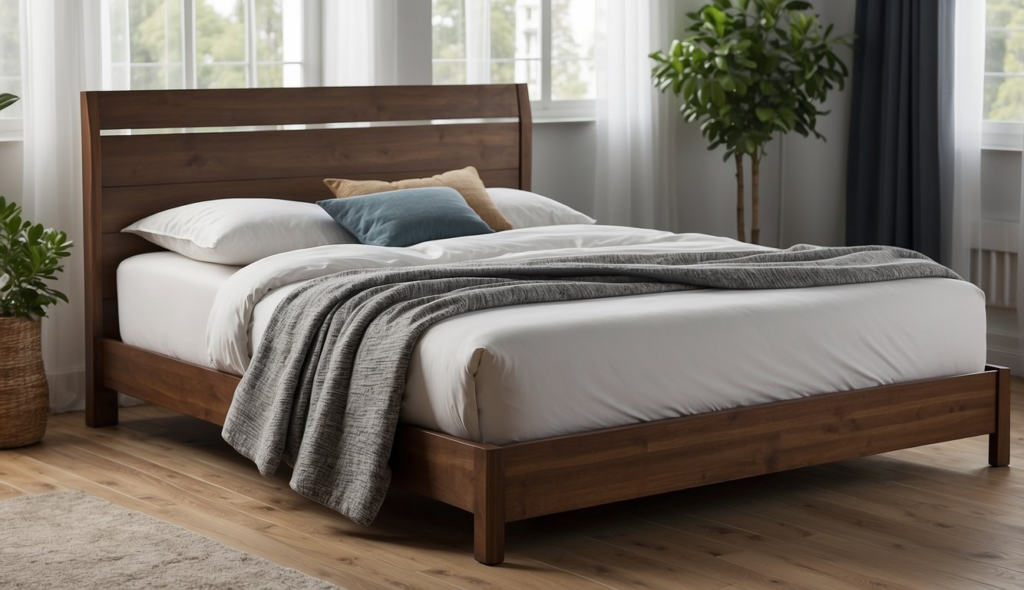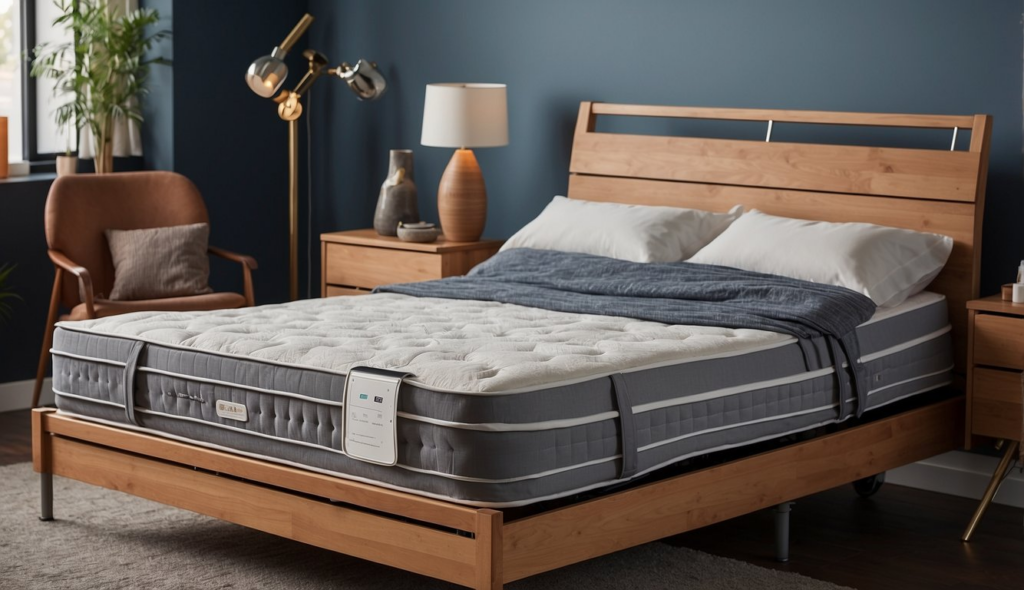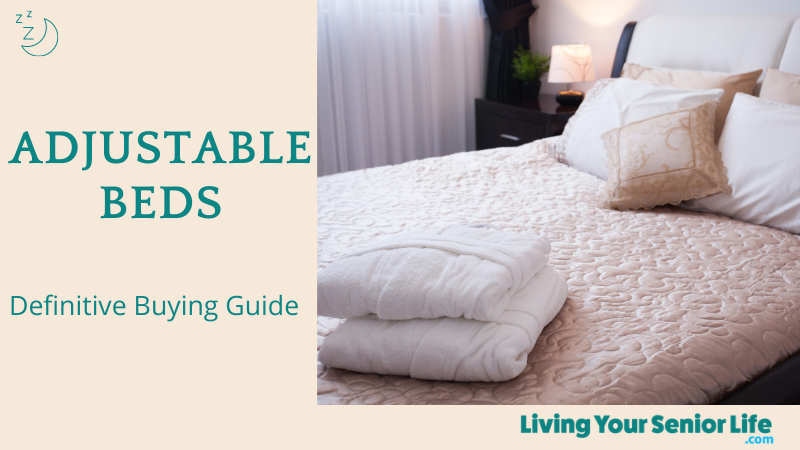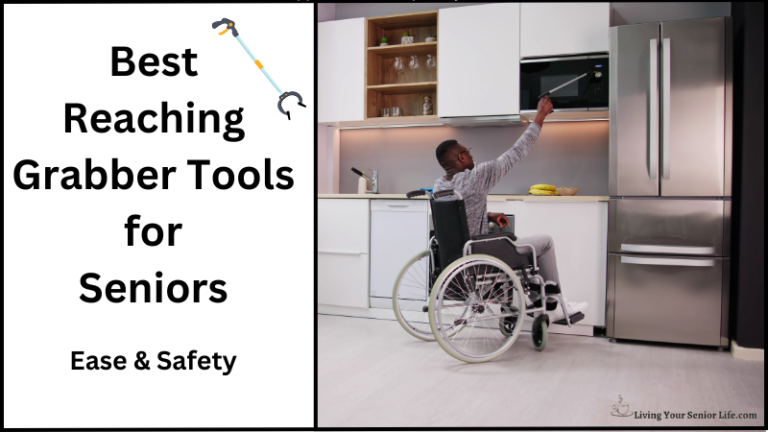In this guide, Best Bed Height for Seniors, we delve into the importance of selecting the right bed height for seniors, exploring key considerations, safety measures, and comfort-enhancing strategies. Whether you’re a caregiver, a senior yourself, or simply someone seeking to optimize their living space for aging loved ones, join us as we navigate the intricacies of bed height for seniors and discover how to strike the perfect balance between safety and comfort.
As we age, our needs for comfort and safety become increasingly paramount, especially when it comes to something as fundamental as our sleeping arrangements. For seniors, the height of the bed can significantly impact their daily comfort and overall well-being. Finding the optimal bed height isn’t just about convenience; it’s about creating an environment that promotes ease of movement, reduces the risk of falls, and enhances the quality of rest.
Quick Answer: What is the best bed height for seniors? The best bed height for seniors can vary depending on individual needs and preferences, but generally speaking, a bed height that allows for easy entry and exit without excessive bending or climbing is ideal. A common recommendation is a height that allows the senior’s feet to comfortably touch the floor when sitting on the edge of the bed, typically around 18 to 23 inches (about 45 to 58 centimeters) from the floor.
Key Takeaways:
- The right bed height aligns with an individual’s knee height to provide comfort and assist with mobility.
- Bed components like box springs and mattress thickness contribute to the overall height, affecting ease of access and safety.
- Personal preferences, health, and mobility requirements are critical in choosing the perfect bed height for seniors.
Understanding Bed Height

When selecting the right bed height for seniors, it’s essential to consider factors such as mobility, safety, and comfort. The goal is to find a balance that accommodates health conditions like arthritis and minimizes the risk of falls.
Defining Ideal Bed Height
The ideal bed height is typically determined by the distance from the floor to the top of the mattress, allowing for a seated edge-of-the-bed position where your feet rest flat on the floor and knees form a 90-degree angle. This height often correlates with the average knee height, which can vary by individual but typically ranges between 16 to 23 inches for most older adults. Adjustable bed frames and bed risers can customize the height for your specific needs.
| Feature | Benefit |
|---|---|
| Adjustable base | Customizes bed height for personal preference and comfort. |
| Low-profile bed | Easier access and exit for mobility issues and senior citizens. |
| Box spring | Adds height to a bed for those preferring a taller bed. |
| Platform beds | Offers a modern look and can be ideal with their lower bed height. |
Benefits of Proper Bed Height
Choosing the best bed height can lead to a good night’s sleep and reduce joint pain, especially for those with arthritis. It also aids in bed transfers and minimizes the risk of falls for those with muscle weakness or mobility limitations. A bed that’s too high or low can strain your muscles, while the right bed height supports a safe and comfortable standing position for both getting into and out of bed.
Elderly people with health conditions should aim for a balance where the overall height is neither a challenge nor a strain.
Impact of Bed Height on Mobility and Safety
Mobility and safety are directly influenced by bed height. Low beds can be difficult to rise from, exacerbating joint pain and mobility issues, whereas taller beds may increase the risk of falls. For those using bed rails, the bed’s height should still allow for safe use without the bed rails becoming a trip hazard.
Ensuring the height of your bed frame complements the thickness of your mattress will help maintain the correct height for easy access. Senior citizens should consider their height and mobility when choosing a new bed; health care providers can often provide guidance on the appropriate bed height for individual conditions.
Choosing the Right Bed Components
When selecting the best bed components for seniors, it’s key to consider bed frames, mattresses, and additional enhancements that cater to specific needs such as mobility issues and comfort.
Bed Frames and Their Heights
The height of the bed frame greatly influences the overall height of a bed. A standard bed height is often around 18″-22″, while adjustable beds can be modified to various heights. Platform beds offer a modern look with built-in support, usually not requiring a box spring. For elderly individuals, the right bed height should allow them to sit with feet flat on the floor and knees at a 90-degree angle.
- Low-profile bed frames: Ideal for those with mobility issues or muscle weakness.
- Bed risers: A good solution for a low bed to reach the ideal bed height.
- Adjustable bed frames: Considered among the best beds for the elderly as they allow for height adjustments based on personal preference and facilitate bed transfers.
Mattresses and Support
Mattress height influences the overall height of a bed and, consequently, the best bed height for a good night’s sleep. A memory foam mattress or one of appropriate mattress thickness can help alleviate joint pain.
- Mattress toppers: May increase comfort on traditional beds and adjust the overall height slightly.
- Mattress foundation: Should support the top of the mattress effectively for easy access.
Consider mattress support that matches personal style, whether it’s a firmer box spring or an integrated platform bed design.
Additional Bed Enhancements
Additional factors like bed rails for stability and storage space under taller beds affect the right height for seniors.
- Step stool: May assist shorter individuals with taller beds.
- Adjustable Bases: Adjustable bases offer versatility for different medical conditions and personal comfort.
- Bed Risers and Casters: Adding bed risers or caster wheels can modify traditional beds and platform beds for easier access or better storage space.
- Bed Rails: Installing bed rails can help prevent the risk of falls, providing extra security and making it easier to get in and out of bed.
- Bed Base & Frame Type: Consider the type of bed frame—metal frame, antique bed frames, or a modern look—which may impact the setup and height of the bed frame.
Remember, the bed’s height should cater to the elderly people’s specific needs. Assessing your own height and any medical conditions could also dictate the best adjustable beds to facilitate mobility limitations.
Special Considerations for Seniors

Choosing the right bed height for older adults requires considering both their current and future needs. The perfect bed height can affect ease of access, comfort, and safety.
Adjustability for Changing Needs
An adjustable bed frame is a versatile option for seniors, accommodating different positions for sleeping, reading, or other activities. With a remote, you can easily change the bed’s height to your height preference. Best adjustable beds for the elderly allow for the top of your mattress to align with average knee height, creating an almost 90-degree angle when seated on the edge of the bed. This position facilitates easier bed transfers, especially for those with mobility issues.
Managing Risks for Elderly
The best bed height for the elderly is one that minimizes the risk of falls and provides support for aching muscles and joints. Low beds can pose a risk for those with limited mobility, making it tough to stand up without assistance. Conversely, taller beds might lead to falls or difficulty getting in and out of bed. It’s essential to include bed rails for added stability and security, especially for elderly people who need the extra support. Caregivers should ensure the mattress height is appropriate — not all box springs and mattress toppers suit every individual’s limitations. Consider the thickness of your mattress and the height of the bed frame to achieve the right height.
Making the Right Choice
Choosing the right bed height is crucial for the comfort and well-being of elderly individuals. It affects ease of access and can prevent injuries related to falls or awkward movements.
Assessing Individual Needs
When evaluating the best bed height for seniors, personal preference plays a significant role, but it must be balanced with physical capabilities and health considerations.
- Weight and Height: A taller person may prefer a taller bed, whereas a shorter person might find a lower bed height more suitable.
- Mobility Issues: For individuals with mobility limitations, an adjustable bed frame or a home hospital bed can provide different heights and positions for better support.
- Mattress Thickness: The thickness of your mattress or addition of a mattress topper can alter the top of your mattress, affecting the mattress height and ease of bed transfers.
Tip: Measure the average knee height of the user and compare it against the potential bed’s height to determine the right height.
FAQs
What considerations are important when choosing a bed for seniors with mobility issues?
When selecting a bed for seniors with mobility issues, one should consider the ease of bed transfers and the ability to stand up from a sitting position without strain. A proper bed height, often aligned with the individual’s average knee height, can reduce the risk of falls and ease the transition in and out of bed.
What features should be looked for in a bed frame to ensure it is suitable for an elderly person?
A bed frame suitable for an elderly person should offer stability and be compatible with adjustable bed rails if needed. Opting for an adjustable bed frame can be a good idea as it allows changing the bed’s height as required. Additionally, choosing a bed with enough space underneath for easy cleaning can be a plus for maintenance and hygiene.
What are the benefits and drawbacks of using a platform bed for senior citizens?
Platform beds can offer a modern look with storage space, and their standard bed height may be suitable for many seniors. However, the low height may not be ideal for all, especially those with mobility limitations. It’s important to evaluate the thickness of your mattress combined with the bed base to determine if a platform bed will provide the right height for ease of access and comfort.
Conclusion
In the realm of senior care and aging gracefully, even seemingly small details like bed height can make a significant difference in daily comfort and safety. As we’ve explored in this guide, finding the best bed height for seniors involves careful consideration of individual needs, mobility challenges, and personal preferences. By ensuring that the bed height allows for easy entry and exit, promotes stability, and fosters restful sleep, we can create a supportive environment that enhances overall well-being.
Remember, the journey to finding the perfect bed height for seniors is not a one-size-fits-all endeavor. It requires open communication, thoughtful assessment, and perhaps some trial and error. Whether you’re adjusting an existing bed, investing in specialized equipment, or exploring adjustable options, prioritize safety and comfort above all else.
As we strive to optimize living spaces for aging loved ones, let us embrace the importance of thoughtful design and proactive caregiving. By paying attention to the details, like bed height, we can create environments that empower seniors to live independently, comfortably, and with dignity.
Thank you for joining us on this journey of discovery. Here’s to better sleep, enhanced safety, and a brighter future for seniors everywhere.









